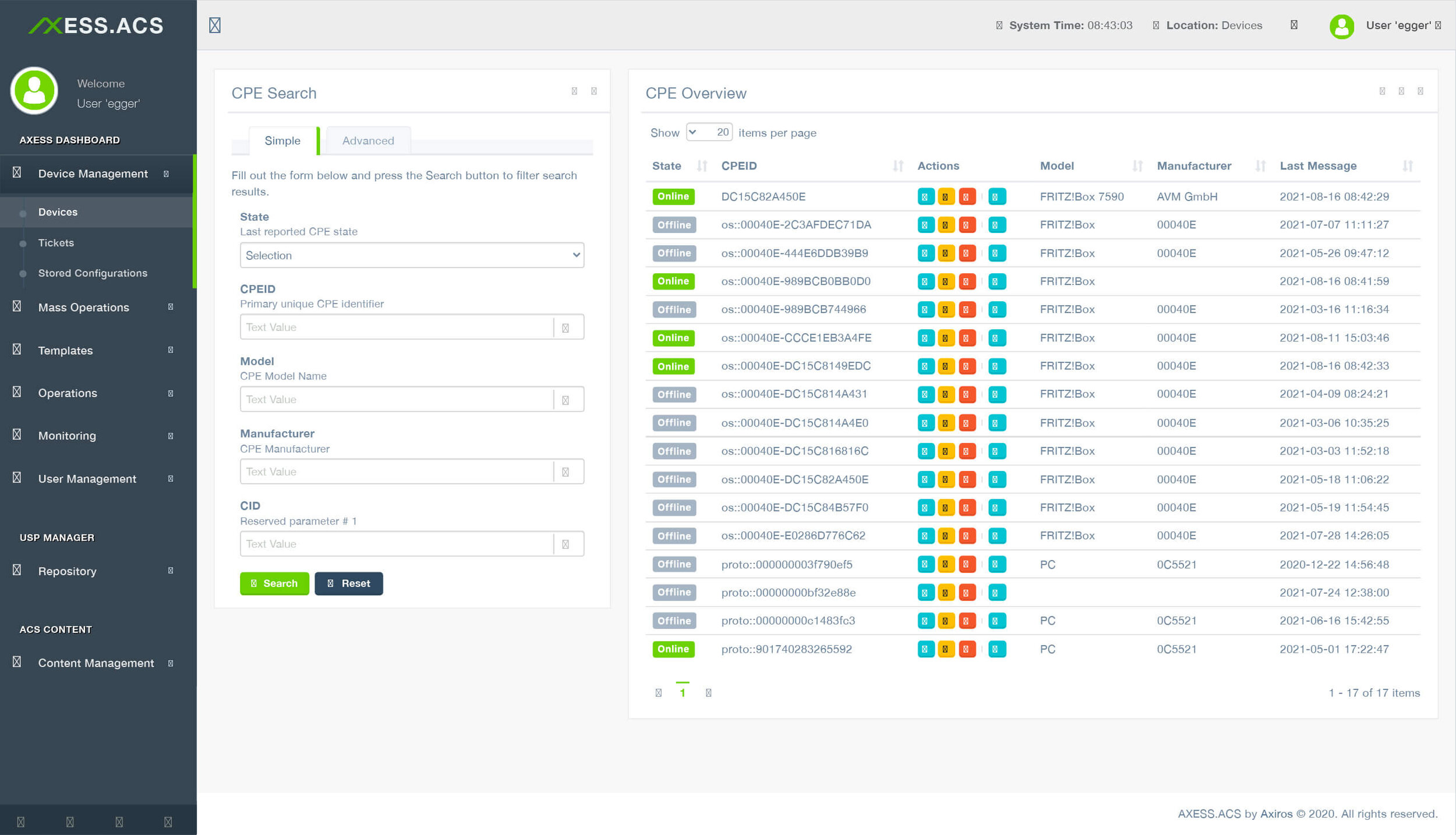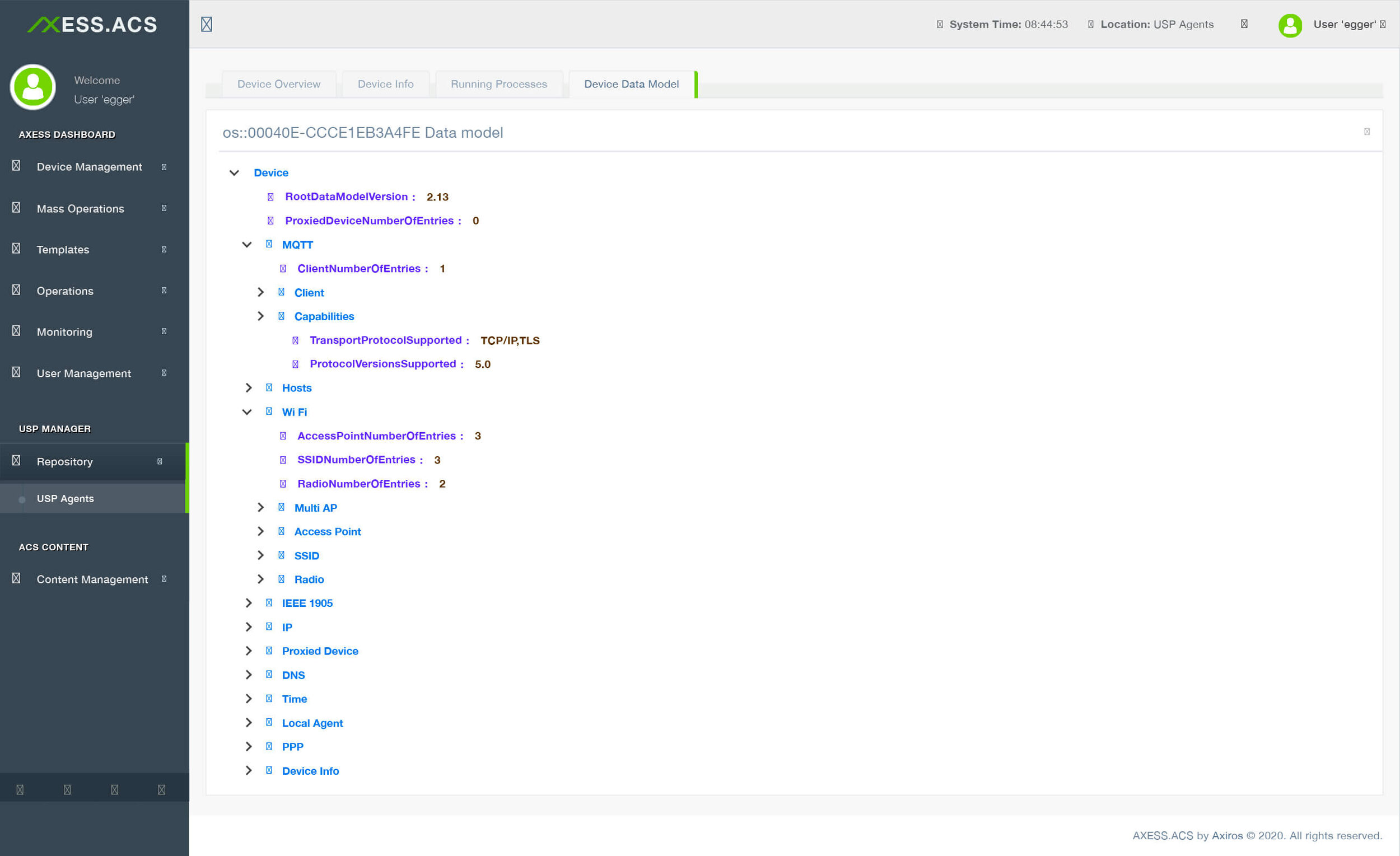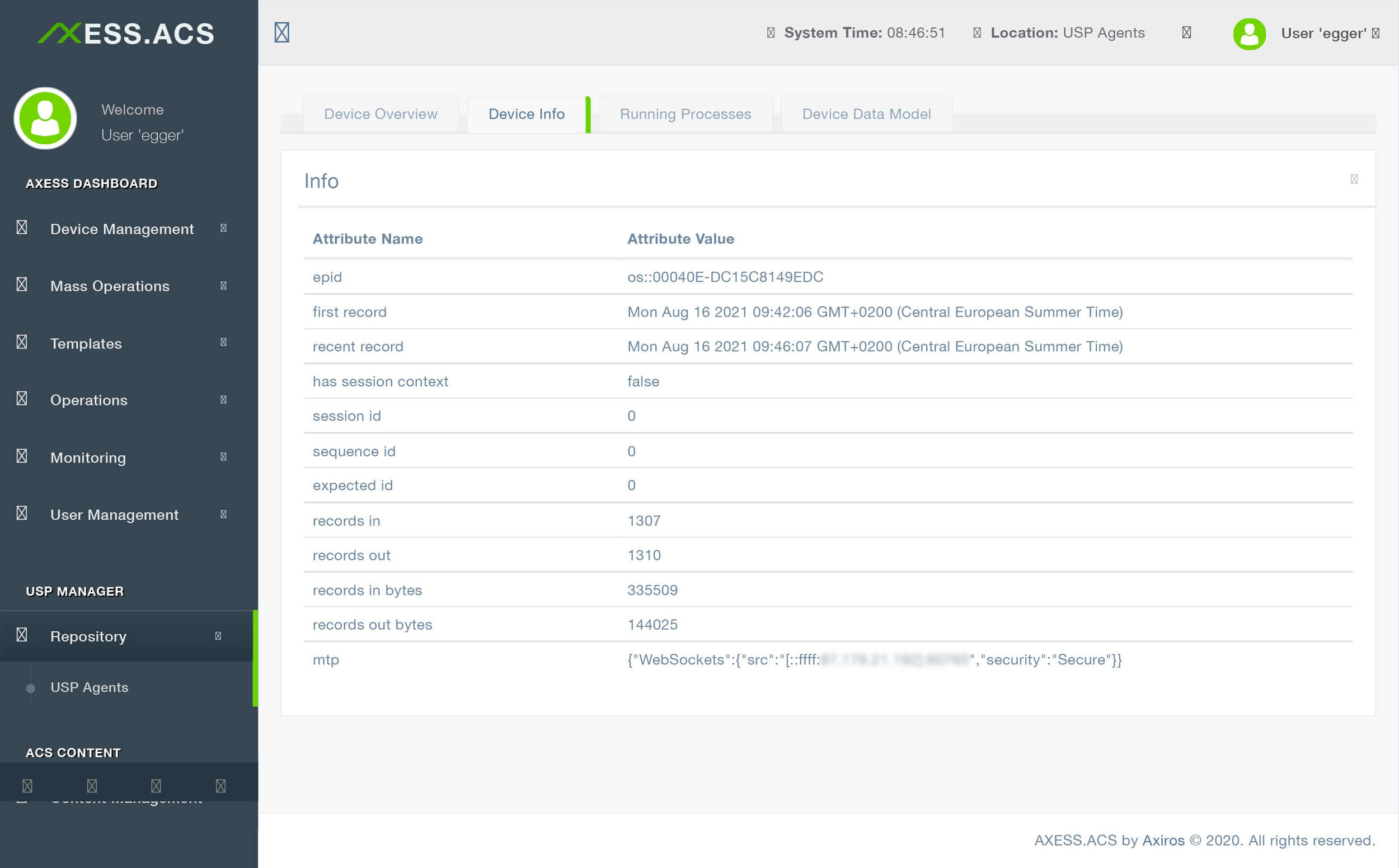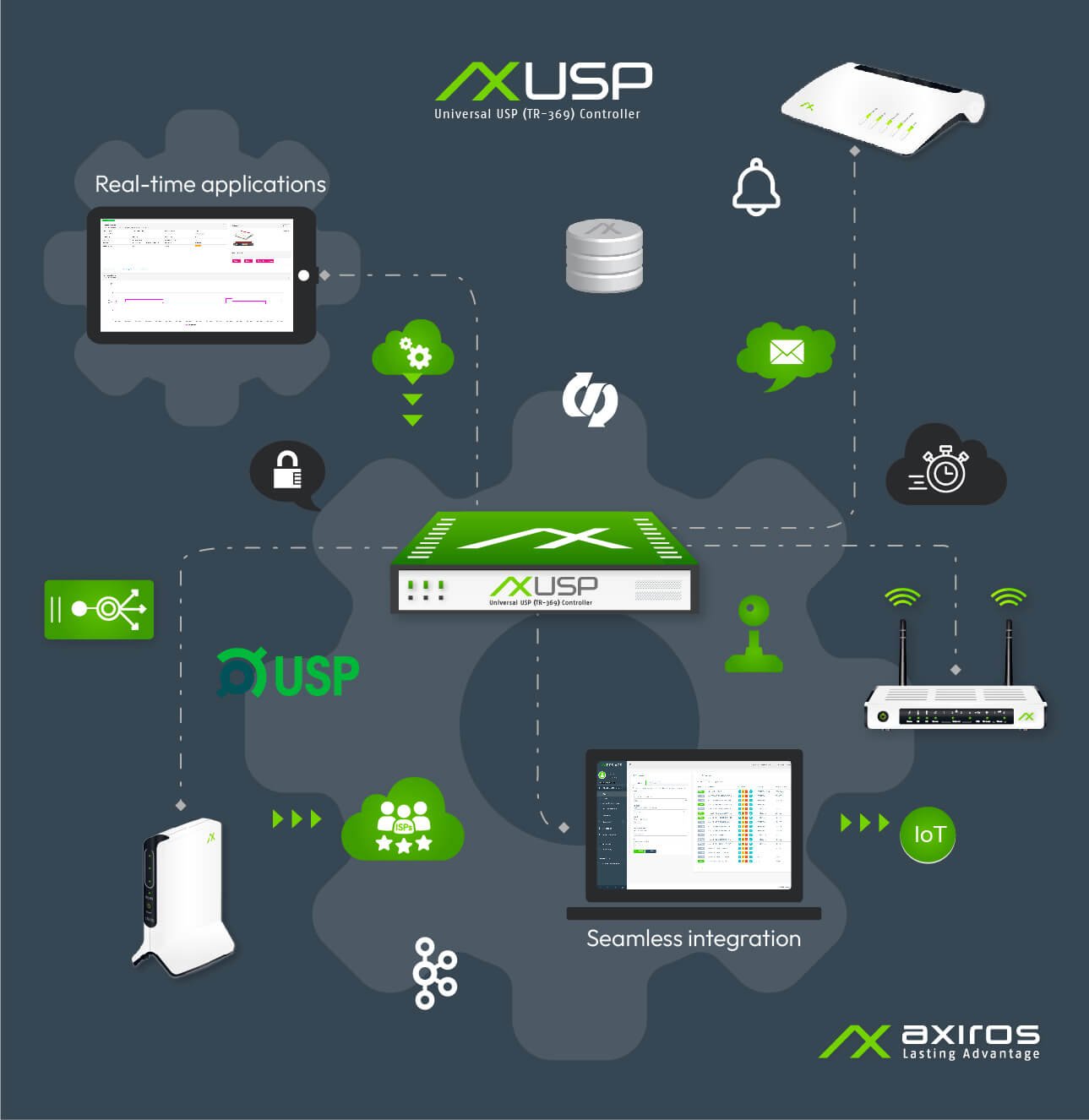AX USP | Controller
Scalable, and Secure Connectivity for Millions of Devices with the Universal USP (TR-369) Controller
Experience Unmatched Scalability with AX USP - TR-369 Controller

AX USP - Universal USP (TR-369) Controller
Axiros AX USP supports millions of concurrent USP Agents connected via WebSocket MTP in a single process. The Controller was developed from scratch in a memory-safe language for safety and speed.
It supports all features specified in the latest TR-369 specification and most features currently defined in the specification process. AX USP interfaces seamlessly with all current and future Axiros products, thereby providing a seamless upgrade path for existing installations.
New Features
Standalone process to handle many concurrent USP sessions
Provides continuity in current product deployments and the user interface
Offers state-of-the-art northbound interfaces for maximum flexibility
Uses a stateless implementation for independence and container compatibility
Download the new Broadband Forum Guide for ISPs: Transitioning from TR-069 to TR-369 (USP)!
This whitepaper aims to guide ISPs through the transition process, highlighting the benefits of TR-369, the coexistence of both protocols, and strategic approaches for seamless integration.
What is a User Services Platform Controller?
A User Services Platform (USP) Controller is a software application that provides a centralized way to provision and manage devices that are USP-enabled. The USP Controller supports both WebSocket and MQTT MTPs, providing a single point of control for all USP-enabled devices.
The USP Controller is designed to be easily integrated into existing systems and processes, providing a seamless way to manage IoT devices. The controller provides a REST API that can be used to provision devices, update firmware, and perform other management tasks.
The controller also includes a web-based user interface that can be used to provision and manage devices.
How a User Services Platform Controller can Help?
The growth of the Internet of Things (IoT) is driving the need for new and innovative ways to manage and control connected devices. The Axiros USP Controller is a high-performance, scalable solution that helps service providers provision and manage a number of connected devices. The USP Controller supports both WebSocket and MQTT MTPs, providing a single point of control for all USP-enabled devices.
The USP Controller is designed to be easily integrated into existing systems and processes, providing a seamless way to manage IoT devices. The controller provides a REST API that can be used to provision devices, update firmware, and perform other management tasks. The controller also includes a web-based user interface that can be used to provision and manage devices.

AX USP Use Cases
Real-time applications and support via low latency communication
Efficient data collection due to a low overhead
Self-service app relying on omni-directional communication
Application scaling using multiple Controllers
Audience measurement
Direct alarming with more elaborate notifications
User consent through a built-in permission system
Service delegation
Third party applications
... and many more.
Interested and want to receive more information?
Learn more about MTPs
When it comes to message transport protocols (MTPs) for connecting USP Agents, two popular choices are WebSocket MTP and MQTT MTP. Each has its own set of advantages and drawbacks, making them suitable for different use cases.
-
A Point-to-Point MTP utilizing the ubiquitous protocol built on HTTP as defined in RFC 6455. Since it is built into all Web browsers and being utilized by many modern Websites and applications, it is perfectly supported throughout the whole industry.
Pros:
- Fast and efficient
- Easy to configure and use
- Excellent built-in security features
- Can reuse infrastructure from TR-069 deployments
- Agent connectivity status always known
Cons:
- Need to handle millions of connections on the Controller
-
A brokered MTP utilizing the well known IoT protocol as defined by OASIS (https://mqtt.org/). MQTT MTP requires an MQTT broker installation (or cloud service) to function and additional consideration/efforts to compensate for the lack of end-to-end connectivity between the Agent and the Controller.
Pros:
- Very flexible in terms of deployment options
Cons:
- Comparedly inefficient due to additional traffic from and to broker and additional meta information required for the USP communication
- Only MQTT5 "fully" specified; MQTT 3.11 and most environments need additional non-specified implementation and workarounds
- High availability difficult to achieve
- Usually requires USP End-to-End encryption, further increasing the complexity









